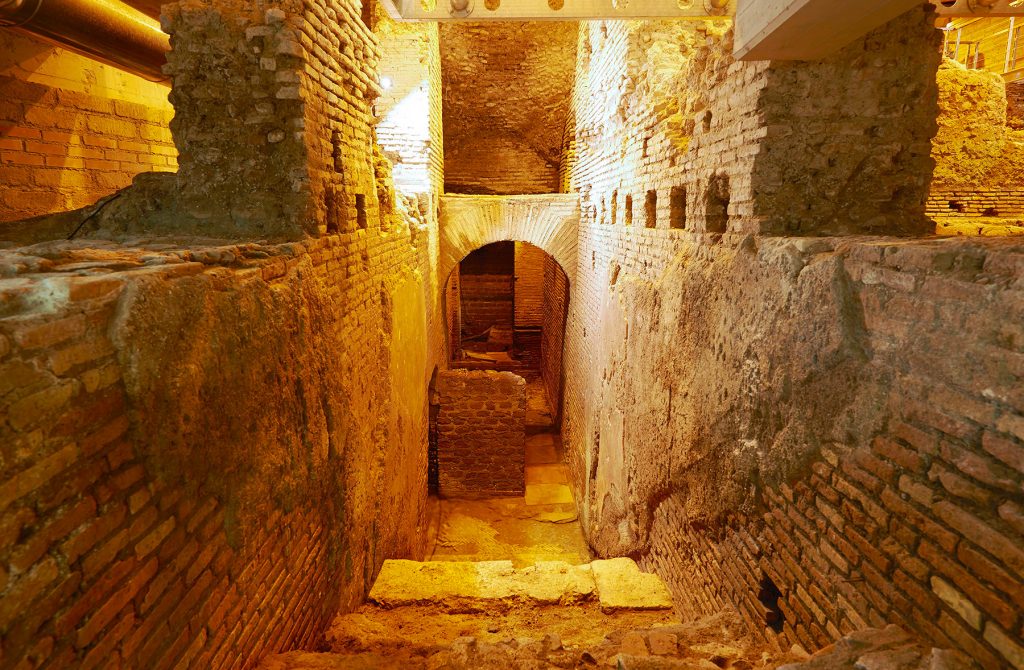The Trevi Fountain is famous worldwide. Less renown is the fascinating archaeological stratification that extends beneath the Trevi district, of which the underground archaeological area of Vicus Caprarius – the City of Water is a evocative example.
At a few paces from one of the most eminent works of art in the world, at more than nine meters in depth respect to the current road level, the archaeological surveys carried out between 1999 and 2001 during the renovation of the former Cinema Trevi, by the Archaeological Authority of Rome (under the scientific direction of Claudio Moccheggiani Carpano), brought to light a building complex from the imperial age representing a remarkable testimony of ancient Rome’s urban fabric.
The availability proffered by the Cremonini Group, owner of the property and contractor of the renovation work, has permitted a complete restoration and an attentive enhancement of the archaeological site that extends over an area of around 350 square meters between Via San Vincenzo and Vicolo Puttarello..

But it is not just the imposing structures of the Virgin Aqueduct and the residential environments that make the visit of the archaeological area unique.
In the three sections of the antiquarium, the findings discovered during excavations have been collected: precious coverings in polychrome marbles, refined decorations (including the famous head of Alessandro helios), so-called spatheia, African amphorae for transporting oil, a marvellous “treasure trove” made up of over 800 coins, all give testimony to the different stages of use and life of the structures brought to light.

PRICES
FULL PRICE: €4.00
REDUCED: €2.50 (Roma Pass, students 18/25 U.E., taught U.E.)
CHILDREN: € 1,00 (children 14-18 years old)
FREE: under 14, university students of archeology U.E, Rome City Pass
GUIDED TOUR: € 8,00 (reservation required)
BOOKING
Reservation is always recommended. It is mandatory on Saturday, Sunday and Holidays.
 For the tourist
For the tourist Hospitality
- HARRY'S BAR HOTEL
Modern, elegant rooms equipped with all comforts
- HARRY'S BAR RESTAURANT
Aperitifs and fine cuisine
- FOOD COURT GOURME
Wide variety of foods Made in Italy
- TREVI HALL
Unique and multifunctional location
